I've been meaning to make myself a Raspberry Pi handheld, but the designs I've seen on the web so far appear a bit impractical to me. I don't think I would actually be able to use something this top heavy/fat:

Or lacking a keyboard:

Or with a tiny screen, a BOM approaching $100, involving too much work:
 http://n-o-d-e.net/post/107977286006/how-to-create-a-handheld-linux-terminal
http://n-o-d-e.net/post/107977286006/how-to-create-a-handheld-linux-terminal
My approach was much cheaper and lazier. I figured I'd eventually find a used/broken portable DVD player with a working screen that could be hollowed out by removing the DVD/CD drive. I would then place a compact keyboard in the cavity. Something like this:
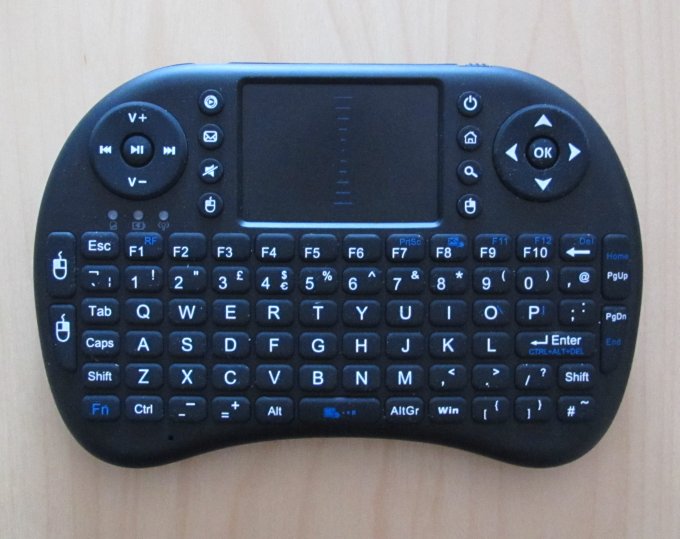
While at a used electronics store, I picked up a pretty good candidate case/LCD combo in the form of a Philips portable DVD player. It was a model PD700, from the "for parts" bin, for a whopping $10. It looked ok, but was missing a power adapter. Here is what a new one looks like:

It didn't have a composite input, but I figured it was worth a shot. Often, the external jack isn't actually soldered on, but these generic DVD player motherboards still have the relevant pads available on the board. If that didn't turn out to be the case, maybe there would be a composite signal somewhere on the board I could get to. Worth an attempt.
So, once back in the garage, I opened it up and found that the motherboard - sadly - didn't have composite out pads. That would have been too easy. Couldn't really trace a usable signal of any sort. The LCD jumper appeared to have R, G and B lines but mixed in with a bunch of fairly complex timing/sync signals. Not something easily tappable. At least for me. Here is what the board looks like:
The chip right next to the connector that interfaces the DVD mechanism just seemed like it was a motor driver. The giveaways were the thicker pins, location on the board... I didn't bother to google it. But the large chip in the center of the board turned out to be interesting; a Sunplus 8202P, which is a RISC based MPEG decoder/all-in-one solution for portable DVD players. Couldn't find the datasheet for the 8202p, but here's the description of the 8202K from the Sunplus website:
-

-
sunplus.png (26.35 KiB) Viewed 795 times
And I also found the 8202S pinouts, here:
http://w3.sunplus.com/products/sphe8202k.asp
[For those interested in this chip, it turns out the source code for it is available online. I briefly browsed through it, but this could be potentially valuable for someone who wants to modify the source with custom features. Here's the link:
http://en.pudn.com/downloads386/sourcec ... 24_en.html
]
I figured, ok, the LCD's obviously being driven by the 8202, so if I isolate the pin delivering the signal, maybe I can piggyback my composite out from the Raspberry Pi and then kill the composite out from the 8202. To test this hypothesis I powered up the DVD player... it wouldn't power on. That explained the "for-parts" and $10 price tag. In order to debug, I was messing around with a multi-meter and realized that the system would start up only if the PSU experienced a momentary short-circuit. So, that solved that problem and the DVD player "booted up".
Post boot, I saw the Philips logo and the menu items were working fine! The LCD was actually pretty decent looking so I figured this would make for a nice handheld display.
Next step was to identify some candidate pins... I got the raspberry pi running, and then soldered a couple of probes to the composite out pads on the Pi. I placed these probes on the incredibly narrow and tightly packaged 8202 pins, including the TV_DAC lines and the promisingly named V_COMP line. For a few seconds, I saw the raspberry pi command line appear, very fuzzily, over the Philips DVD menu, in B&W. I got excited and as I was trying the other TV_DAC pins, the probe with the composite signal touched a pin it shouldn't have. I don't know which one. But there's several 3.3V lines in close proximity, as well as bias voltages.
Net-net, after seeing the shell command prompt text appear for a bit, the LCD blanked out and all I could see was a white background with random colored lines. I rebooted the DVD player, tried several times to get it to just show the menu, but no. It was fried. Specifically, "it" probably being the 8202. Damn.
But that wasn't enough, apparently. When I tried connecting the Rpi to another composite monitor, it wouldn't display anything. Yet, I could see the SD card activity LED flash on power-up, so I knew it was working. I tried an HDMI to VGA adapter and, sure enough, the HDMI out still worked. Apparently the Composite out on the Pi had also died.
What I discovered next was probably the worst part of the screw-up. The USB ports on the Pi wouldn't work either. A cryptic power message appears on boot, followed by enumeration errors. I tried a powered hub, wired keyboards of a variety of types, a USB Wifi adapter... nothing works.
What a chain of failures! So I figured, ok, the board still boots, it has an HDMI display. If USB is fried, maybe I can connect to Ethernet (wired) and SSH into it. But no. Ethernet is dead too.
So, the conclusion of this sad tale is that I am back where I started. Two hours, a cheap DVD player and a Raspberry Pi were the casualties in this - on hindsight, perhaps ill-advised - experiment. That said, the LCD itself might still work if I can find a driver board. And the plastic housing of the DVD player is a pretty good option for whenever I regain the courage to try this again.

























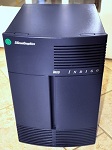









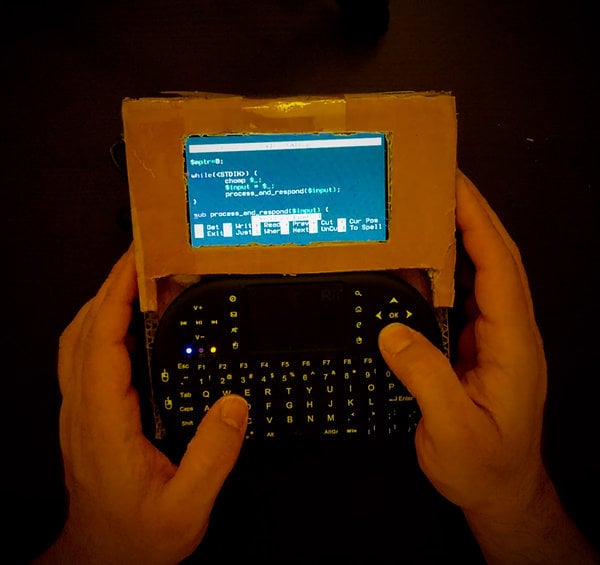

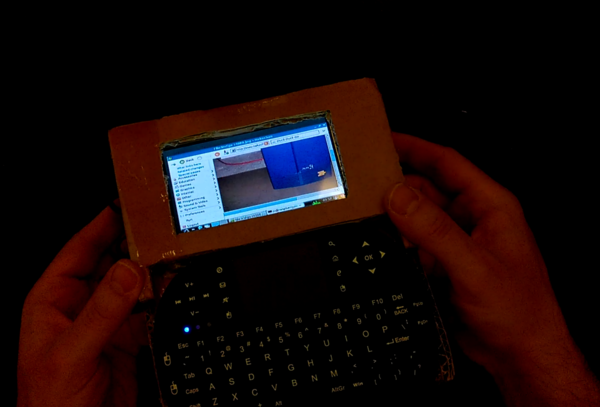
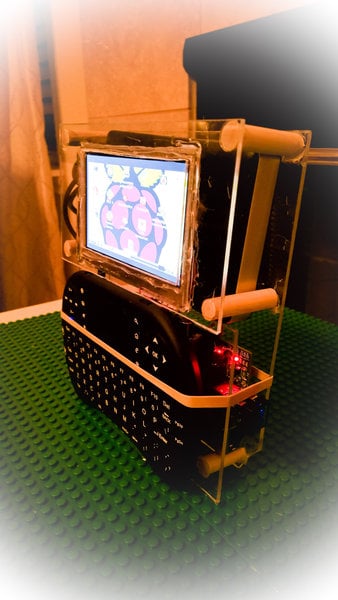
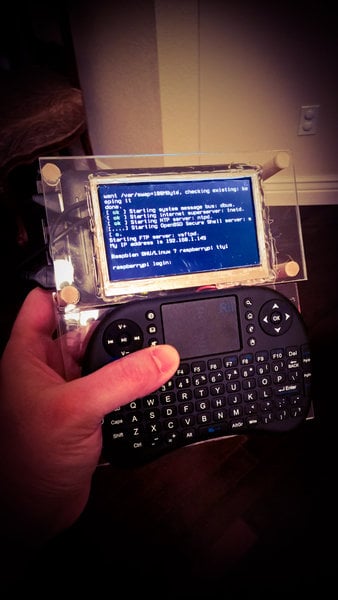
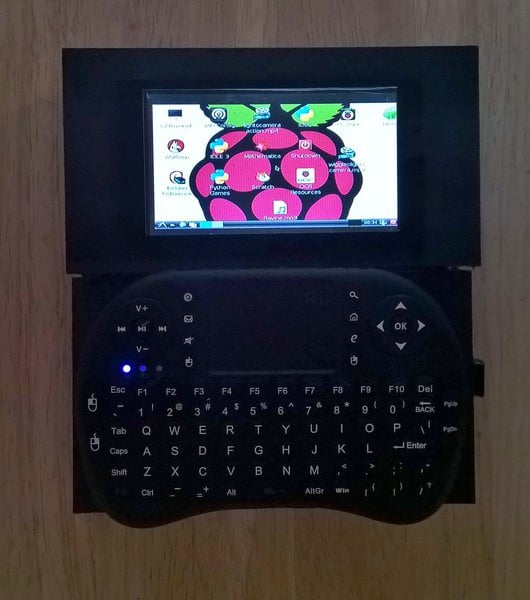
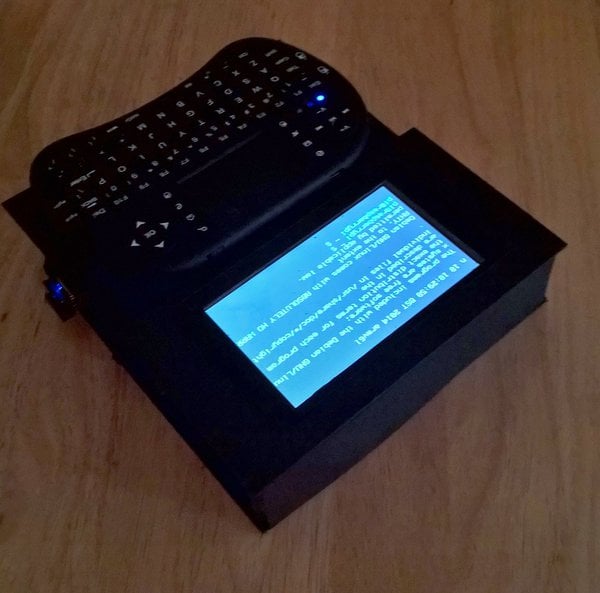
 2 x
2 x